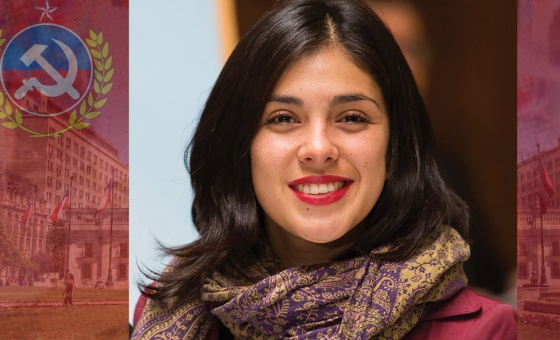This is the last article you can read this month
You can read more article this month
You can read more articles this month
Sorry your limit is up for this month
Reset on:
Please help support the Morning Star by subscribing here
Barbara Hepworth: Sculpture
for a Modern World
Tate Britain, London SW1
3/5
FOR YEARS Barbara Hepworth’s reputation has suffered somewhat due to the chauvinistic overstatement of her significance to Western art.
This exhibition of over 100 works, the first major collection of her art for over four decades, catalogues her output from the 1930s to the 1960s and allows a more dispassionate appreciation.
Certainly, the contextualisation of her early work by the inclusion of contemporaries, including Jacob Epstein, Henry Moore and her husband Bill Nicholson, is not one she necessarily benefits from.
In the 1920s up to the 1940s Hepworth was a “carver,” applying chisel to stone and wood, and this may have limited her ability to explore the revolutionary innovations offered by modernism, then at its apogee.
Her early figurative work displays an omnipresent cross-fertilisation with Moore, resulting in a disconcerting similitude.
Mother and Child (1933) or Large and Small Form are the most telling examples, as is the tongue-in-cheek erotic tribute to her relationship with Nicholson, the phallic embrace of Two Forms (1933).
Such similarities are not unusual — cubist paintings by Georges Braque and Pablo Picasso appear to be the work of one and the same artist.
In the late 1930s abstraction took hold, informed by the constructivist ideas propagated by Naum Gabo, one of many refugees from Nazi Germany.
But Hepworth’s output is devoid of such modernist audacity. More often than not, the forms are domesticated by being visually non-confrontational, even ordinary. They are spatially subdued or cumbersome, exactly the opposite of what the spirit of modernism fostered.
Works such as Forms in Echelon (1938) were still carved in wood but the shapes suggests a lineage to the Men-an-Tol megaliths close to St Ives in Cornwall.
At the advent of WWII Hepworth settled in the area and this environment galvanised a new direction, best exemplified by Pelagos (1946) — “sea” in Greek — with curvy chunks of elm hollowed, much like the bowels of imaginary conches, internally painted white and criss-crossed with tension-defining strings.
In the 1950s and ’60s, Hepworth appears at her most liberated with the sculpted swirling forms of Oval Form (Trezion) or the bronze Meridian seemingly grasping space with far greater enterprise.
Ultimately, however, the lack of gravitas is as palpable as it is disappointing — there’s no wow factor of sudden aesthetic revelation.
A handful of pieces that might amuse are hardly a justification of the hefty £16.30 admission price.
After all, Hepworth’s estimable Winged Figure (1961) — bolted to the side elevation of the John Lewis store in London’s Oxford Street — can be viewed for free.
Until October 25, box office: tate.org.uk










